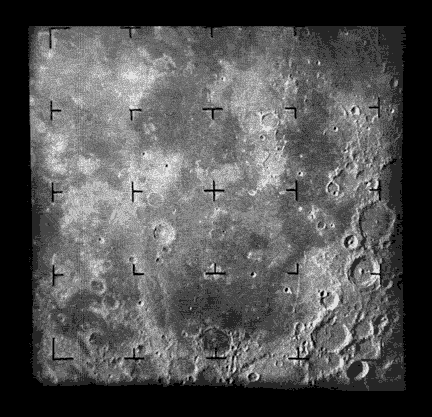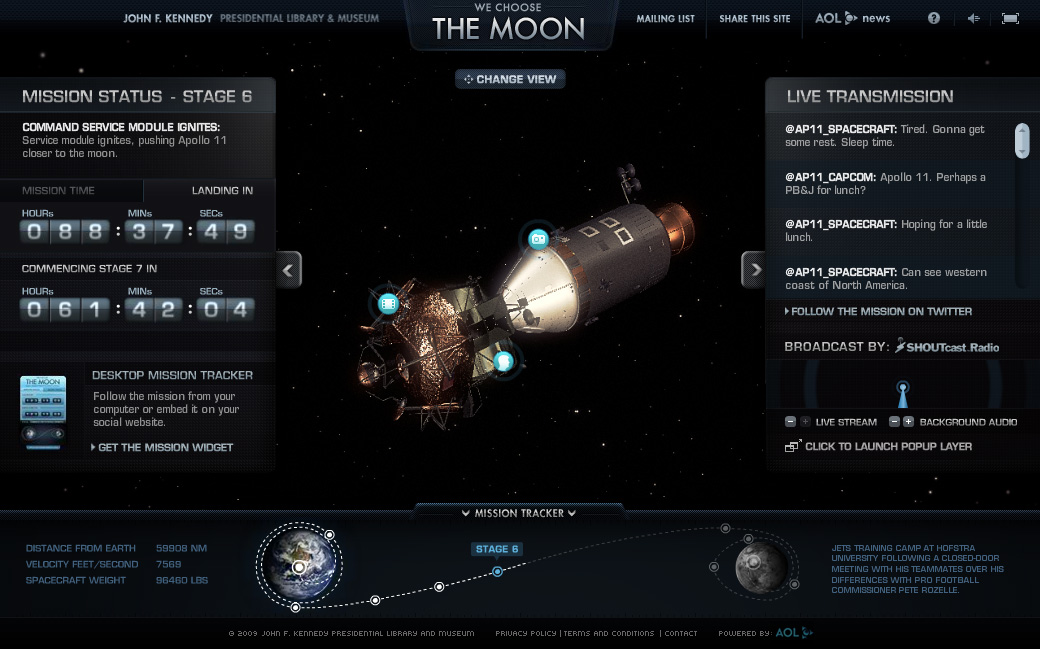 Follow the Apollo 11 mission in real time at wechosethemoon.org for the 40th anniversary of Apollo 11. The site comes complete with a gorgeous mission animation that shows the viewer what stage the mission is in as the data loads in the background. Once the page opens up we are treated to various interactive modules like photo and video galleries featuring material from the current stage of the mission as well as an oddly placed JFK and Apollo gallery.
Follow the Apollo 11 mission in real time at wechosethemoon.org for the 40th anniversary of Apollo 11. The site comes complete with a gorgeous mission animation that shows the viewer what stage the mission is in as the data loads in the background. Once the page opens up we are treated to various interactive modules like photo and video galleries featuring material from the current stage of the mission as well as an oddly placed JFK and Apollo gallery.
The best part is the real-time audio stream. As I am writing this, the astronauts are asleep and every 15 minutes mission control interrupts the static to essentially report how long they have been asleep and that the mission is progressing nominally. As boring as that is… it sure makes it real and takes those too young to have been a part of it as close to knowing how that might have felt to follow this historic event. Of course, the whole thing peaks on the 20th with the real-time streaming of touch down at Tranquility Base.
Also see NASA’s newly restored footage of Apollo 11 and Neil Armstrong’s magnificent first step.
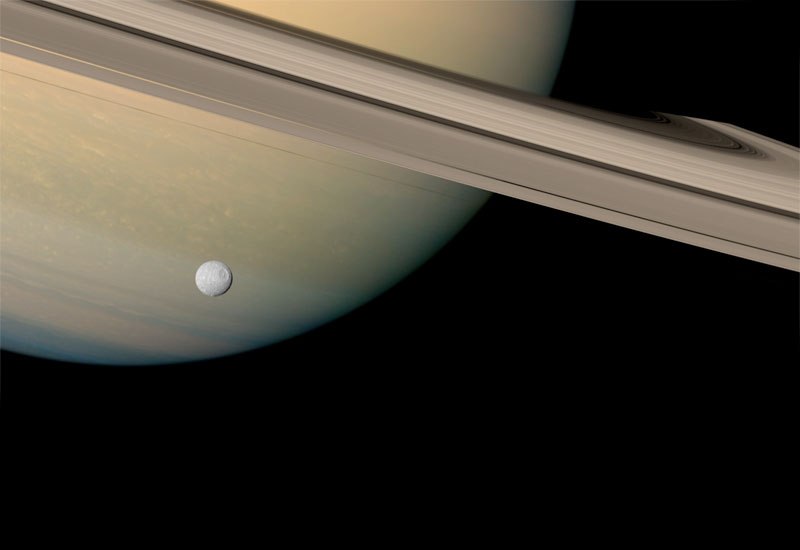
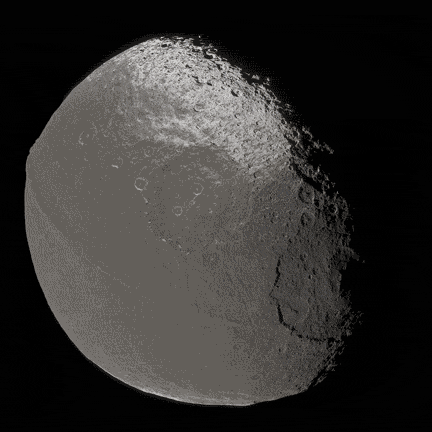

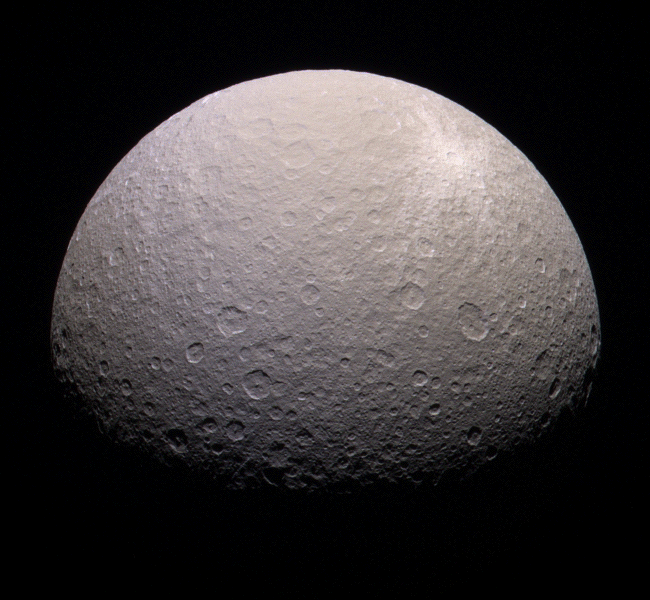 Another Gordan Ugarkovic. It never ends!
Another Gordan Ugarkovic. It never ends!
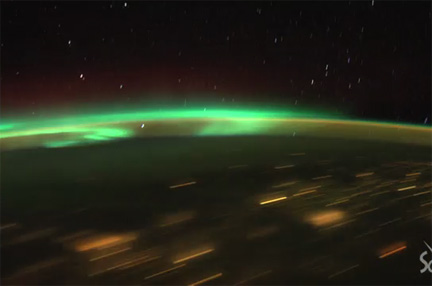

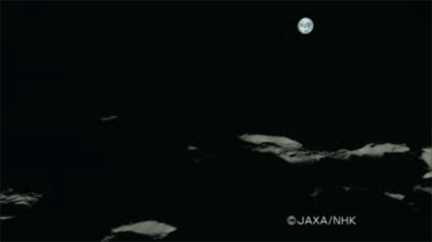

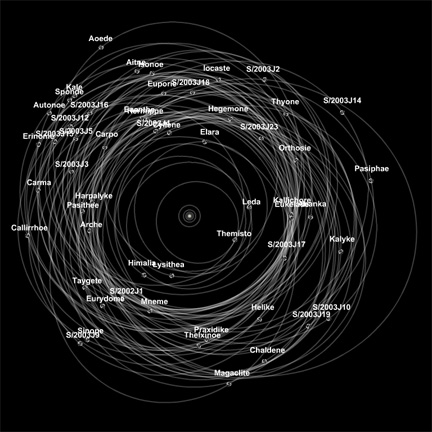
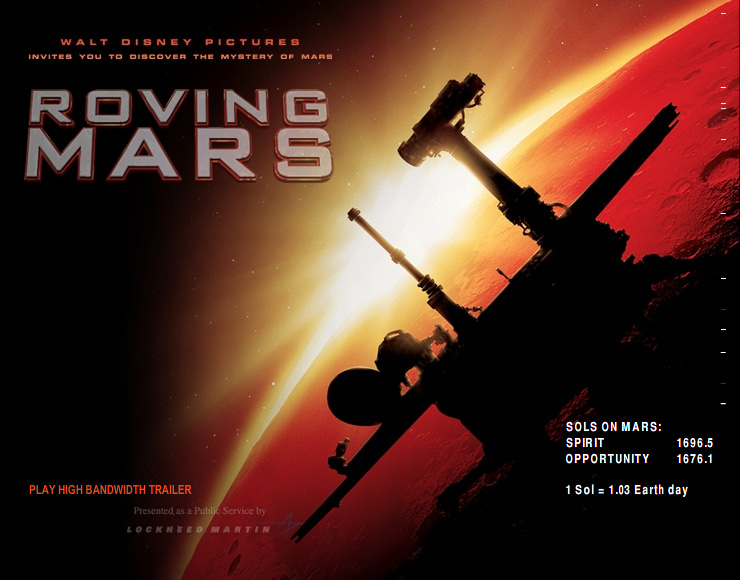

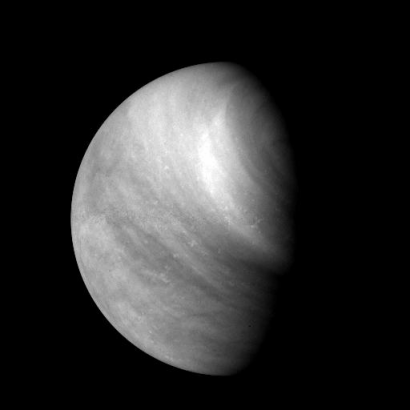 Too few images come from the
Too few images come from the 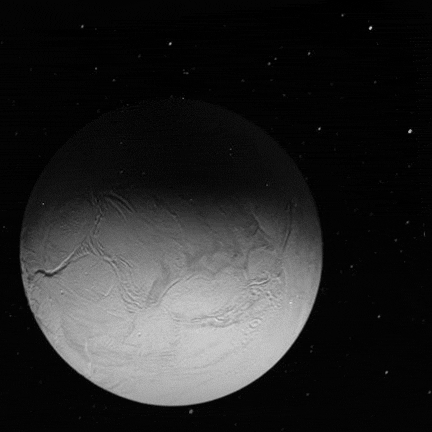 Cassini moves away from it’s risky encounter at Enceladus… This came out so cool that it looks fake.
Cassini moves away from it’s risky encounter at Enceladus… This came out so cool that it looks fake.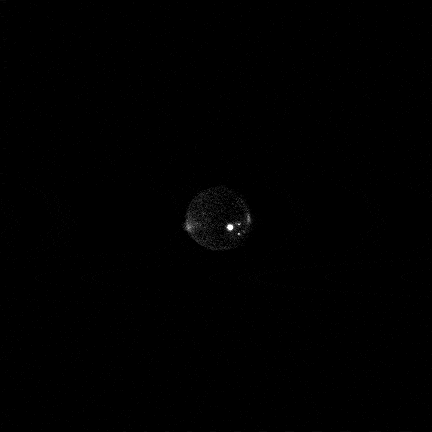 Check out this great animation found on the internet a while back that was compiled from images taken by the Cassini probe as it flew by Jupiter at the tail end of 2000. It used to be hosted at a U.S. astrogeology site which no longer exists and the animation was credited to Paul Geissler. Those glowing dots are active volcanoes. At the very end there is a blast of light from a crescent Io coming into view. The features are strikingly similar to those of the “dark side” image of Io published
Check out this great animation found on the internet a while back that was compiled from images taken by the Cassini probe as it flew by Jupiter at the tail end of 2000. It used to be hosted at a U.S. astrogeology site which no longer exists and the animation was credited to Paul Geissler. Those glowing dots are active volcanoes. At the very end there is a blast of light from a crescent Io coming into view. The features are strikingly similar to those of the “dark side” image of Io published 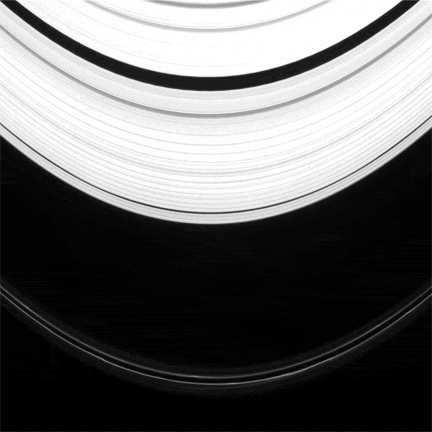 Prometheus disturbing the F-Ring as it passes. We have seen
Prometheus disturbing the F-Ring as it passes. We have seen 